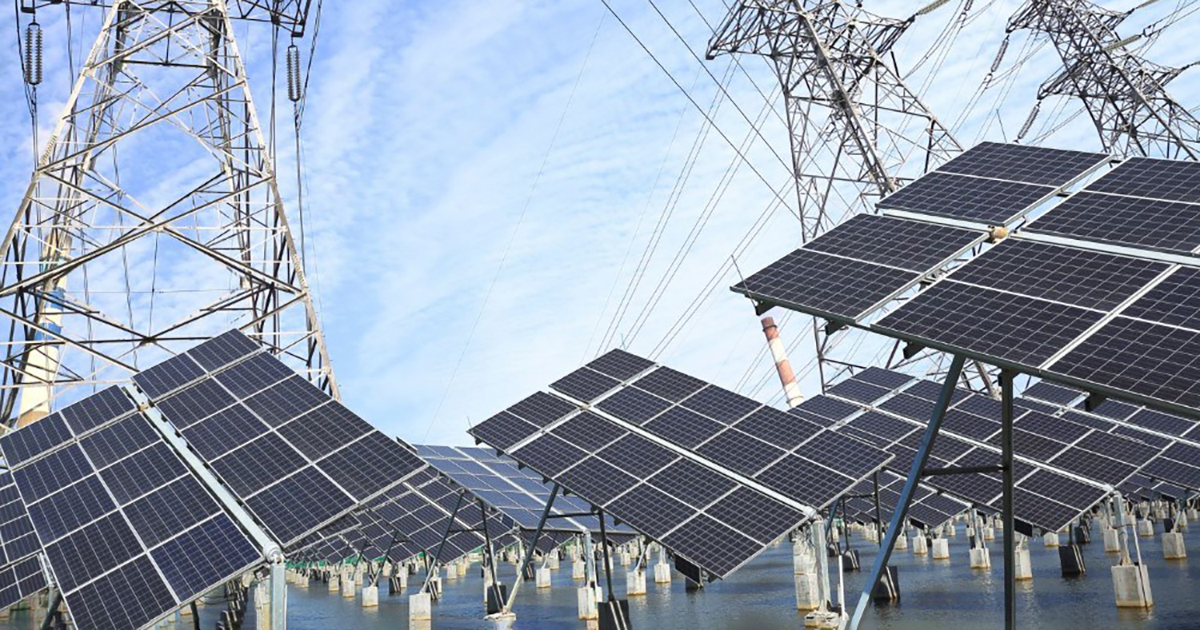Ice on power lines, fierce winds, and severe cold are the ingredients for winter power outages. For businesses, loss of electricity is more than an annoyance — it damages the bottom line.
The cost? It’s not small. An Esource study found that on average, outages of four hours cost $10,000 to $20,000. Costs can be even steeper for industries that risk product spoilage and must shut down and clean up equipment even if the outage is brief.
Unfortunately, power outages occur all too often. A 2019 survey of commercial and industrial businesses found that 60 percent lose power at least once a year, up from 49 percent a year earlier. One out of five businesses experience a monthly power outage.
In California, the weather is no longer the chief cause; instead it is utilities intentionally shutting off power to customers. Why? It turns out utility wires can spark wildfires. So on windy days when fire threats are high, utilities institute what’s known as public safety power shutoffs, a practice that left millions of Pacific Gas & Electric (PG&E) customers without electricity in October and November.
Not surprisingly, more and more US businesses are considering setting up their own onsite energy systems to keep their operations running when the grid is down. But as the same Esource study found, often they are stymied by lack of information. Where to begin? What are the options and which are best suited to your needs?
Let’s answer these questions by taking a look at the four primary approaches to resiliency from the simplest to the most complex.
xx
Onsite Battery Storage
Batteries often are top of mind for companies exploring their resiliency options — and for good reason. For a long time, battery energy storage was the crucial missing piece of the power system. No practical option existed to store electricity on a broad scale, so it had to be used or lost.
Now it is increasingly cost-effective to store power in batteries thanks to technology improvements and better price points. Battery prices have fallen 87% since 2010, from about $1,100/kWh to $156/kWh in 2019, according to BloombergNEF. The research firm expects prices to reach $100/kWh by 2023.
Costs can be offset in some cases by using onsite batteries as market price levers, charging batteries when power prices are low and using the energy when they are high. Or using batteries in efforts to lower demand charges. Your ability to do so will depend on the market rules and programs where you are located.
But batteries have their limits. For one, lithium-ion batteries, the least expensive and most commonly used, typically supply no more than four hours of backup power without a recharge. Meanwhile, it can take days or even weeks for utilities to fully restore power in the aftermath of a storm.
Second, if your goal is to also green your power supply, a battery won’t necessarily help. Your battery output is only as good as its input. So how you charge the battery matters. Keep in mind that US grid uses fossil fuels to produce 60 percent of its electricity.
That’s one reason some companies choose the next option.
xx
Solar Plus Storage
Solar and energy storage are a happy marriage. Installing solar panels onsite offers a way to charge the battery with emissions-free solar power. The solar energy also can extend the length of time your facility has backup power, since it can serve as an energy source to charge the battery.
Solar plus storage has grown in popularity with the falling costs of both batteries and solar panels. The US Department of Energy pegged the levelized cost of energy (LCOE) for commercial solar projects at 40 cents/kWh in 2010; 11 cents/kWh in 2019 and set a 2020 goal of 8 cents/kWh.
Of course, as a resiliency measure, the system is highly dependent on the sun. If your battery runs out, and it’s a cloudy day or nighttime, your power goes out until the solar panels can charge the battery again.
Another limit: not all businesses are situated for solar. If you lease your building, the owner might not be open to the idea of installing solar panels on the roof. Or the building may not be situated to capture solar. Perhaps the roof is shaded by trees. Nearly 50% of US businesses face these types of obstructions to solar, according to the federal government.
It’s also important to be aware of a common misconception about solar panels. On their own, most do not provide backup power to your building during a grid outage. This is because they are connected to the utility grid so when it ceases to function so do the panels. This can be changed by adding an advanced inverter or microgrid control technology, which gets into the third and fourth levels of resiliency: nanogrids and microgrids.
xx
Nanogrids
The difference between solar plus storage and nanogrids appears murky at times. In casual discussion, industry insiders tend to use the terms interchangeably. But Peter Asmus, the research director at Guidehouse who coined the term, says there are clear distinctions.
A nanogrid:
- Is connected to the grid of no greater than 100 kW
- Serves a single building or off-grid loads not exceeding 5 kW
- Might use any source of generation and storage (although most use solar and batteries)
Most significantly, a nanogrid provides resilience, while a solar plus storage system might be installed purely for other purposes, such as managing costs and meeting green energy goals. A nanogrid keeps the power flowing by use of energy management software or controls that let it disengage or ‘island’ from the utility grid during an outage. At that point its onsite generators or storage supply the building with power. When the outage ends, the nanogrid reconnects the building to the utility grid.
Islanding distinguishes nanogrids and microgrids from other forms of distributed energy.
Advanced microgrids and nanogrids also can engage in sophisticated energy management. They may be programmed to achieve specific goals, such as lowest cost pricing or least carbon impact. They also can sell energy and ancillary services to the utility grid, where market rules allow, to achieve revenue streams for their owners.
xx
Microgrids
Of the four energy resiliency technologies described here, microgrids are the most sophisticated. Unlike nanogrids, they are not limited by size, and may serve one building or many. Microgrids are common to college campuses, for example, or swaths of cities where critical services are located, such as hospitals, police stations and water treatment facilities.
They typically include at least two onsite sources of power; some microgrids have several: solar, wind, batteries, fuel cells, combined heat and power and natural gas or diesel generators. The microgrid may toggle between the different energy sources depending on their availability and cost to produce power at any given time.
Because they can supply power for days, weeks or indefinitely — depending on their fuel sources — microgrids tend to be choice for businesses with crucial power needs: research or pharmaceutical facilities, data centers, and military installations, for example.
Most North American microgrids are connected to the utility grid. This allows them to leverage grid pricing or supply grid services. Some microgrids, for example, are located to help ease grid congestion (and be paid for doing so) when they are not needed to provide power to their host.
Other microgrids operate 24/7 as self-sufficient islands; often such microgrids are found in remote locations where no reliable utility grid exists. But there are exceptions. The new TWA Hotel at JFK Airport operates completely independent of the grid, a mode its owner says cuts costs because of the high price of connecting to New York City’s grid.
The cost of nanogrids and microgrids vary dramatically based on their complexity — any where from tens of thousands of dollars to tens of millions or more. Generation and energy storage typically account for most of the cost. Some businesses are able to reduce microgrid installation costs by using power they have already installed onsite. Many also are opting for increasingly popular energy-as-a-service contracts which free them from making any capital investment. The microgrid is owned by a third party and the business pays only for the services it provides.
In an era where reliable power is increasingly important — and increasingly at risk — it’s a good ideas for businesses to investigate resiliency measures. Knowing which is right for you requires a careful look at your operation and its energy needs. That’s what Priority Power Management does. If you’re interested in looking more deeply at a resiliency solution for your business, we’re happy to help as your trusted advisor. Give us a call!





